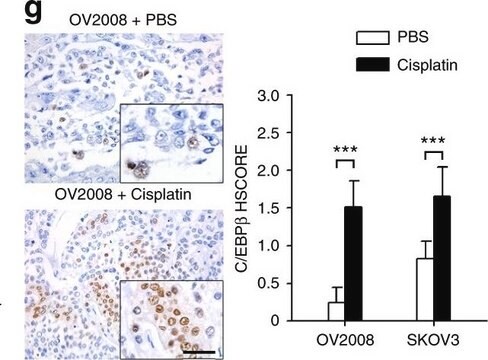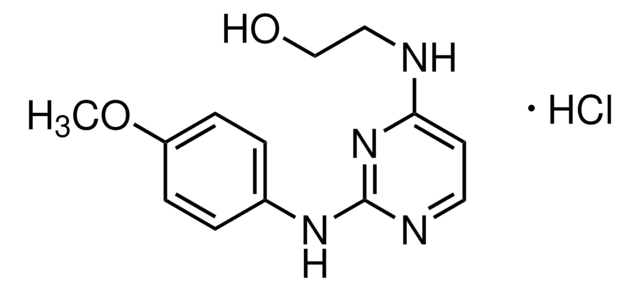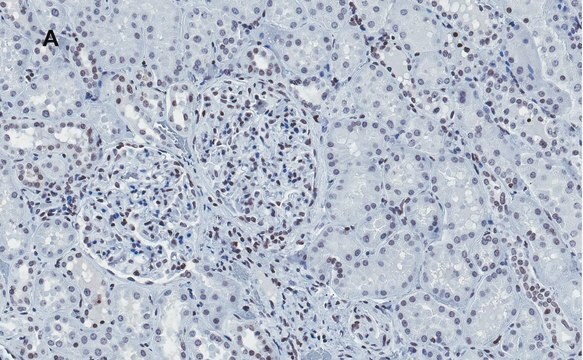推荐产品
生物源
mouse
重組細胞
expressed in Hi-5 Insect cells
化驗
≥95% (HPLC)
≥95% (SDS-PAGE)
形狀
lyophilized
效力
4.0-6.0 μg/mL ED50
分子量
35.0 kDa
包裝
pkg of 25 μg
雜質
<0.1 EU/μg endotoxin, tested
顏色
white to off-white
UniProt登錄號
運輸包裝
wet ice
儲存溫度
−20°C
基因資訊
mouse ... ADIPOQ(11450)
生化/生理作用
Adiponectin is an adipose-derived secreted protein containing 236 amino acid residues. It is relatively abundant in humans and rodents, accounting for about 0.01% of total plasma protein. The circulating levels of adiponectin are decreased under conditions of obesity, insulin resistance, and type II diabetes. Disruption of adiponectin in mice causes insulin resistance and neointimal formation. Conversely, administration of recombinant adiponectin suppresses hepatic glucose production, and reverses insulin resistance associated with both lipoatrophy and obesity. The protective role of adiponectin is attributed to its anti-inflammatory properties (e.g. ability to suppress expression of TNF-a and class A scavenger receptor in macrophages). Recombinant adiponectin is a multimeric glycoprotein containing amino acids Val-21 to Asn-247 of the adiponectin precursor protein fused to an N-terminal histidine tag. Monomeric glycosylated adiponectin migrates at an apparent molecular weight of approximately 35.0 kDa by SDS PAGE analysis under reducing conditions.
外觀
Lyophilized from 20 mM Tris, pH 8.5 + 75 mM L-Arginine.
重構
Centrifuge the vial prior to opening. Reconstitute in water to a concentration of 1.0 mg/mL. Note: Allow the reconsituted vial to sit at room temperature for 30 minutes before use.Do not vortex. This solution can be stored at 2-8°C for up to 1 week. For extended storage, it is recommended to further dilute in a buffer containing a carrier protein (example 0.1% BSA) and store in working aliquots at -20°C to -80°C.
儲存類別代碼
10 - Combustible liquids
水污染物質分類(WGK)
WGK 3
閃點(°F)
Not applicable
閃點(°C)
Not applicable
Flegal, J.M. et al.
Journal of the American Medical Association, 288, 1723-1727 (2002)
Xiaotian Tang et al.
eLife, 10 (2021-11-17)
Adiponectin-mediated pathways contribute to mammalian homeostasis; however, little is known about adiponectin and adiponectin receptor signaling in arthropods. In this study, we demonstrate that Ixodes scapularis ticks have an adiponectin receptor-like protein (ISARL) but lack adiponectin, suggesting activation by alternative
我们的科学家团队拥有各种研究领域经验,包括生命科学、材料科学、化学合成、色谱、分析及许多其他领域.
联系技术服务部门








